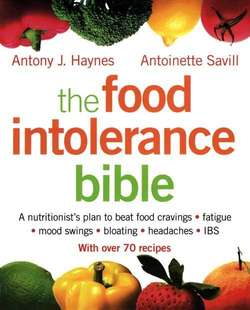Читать книгу The Food Intolerance Bible: A nutritionist's plan to beat food cravings, fatigue, mood swings, bloating, headaches and IBS - Antoinette Savill, Antoinette Savill - Страница 32
If Your Score Is Between 16 and 25
ОглавлениеThis is a moderate score and reflects that you have too many symptoms to be in optimal health. You need to do something different in order to improve your symptoms, and a food intolerance investigation should be carried out as part of this process. Please check your diet to see if it contains many of the ‘Usual Suspects’ and avoid the top four of these (in terms of regularity and volume of consumption – e.g. wheat, dairy, sugar and tomatoes – or whatever you identify in your diet), for two weeks.
Also, start the Digestive Support Plan, as detailed in Part 3.
If your symptoms have improved, then avoid them for a further two weeks (one month in total). Then reintroduce the foods, one at a time, allowing four days in between. Eat a normal portion of the food. Observe whether any of your symptoms return. Sometimes foods continue to trigger reactions after you have avoided them for a period of time, sometimes not. However, even if there is no worsening of symptoms, it is suggested that you do not eat the culprit food(s) every day in case you re-create the original intolerance symptoms. If a food triggers symptoms again, then avoid that food completely for two months before repeating the reintroduction process. If the symptoms persist after this time, continue to avoid the food, but investigate other conditions detailed in Part 2. This will be helped by completing the relevant questionnaires.
If, after the two weeks, your symptoms have not improved by avoiding the four main potential culprits, then reintroduce them in the manner described. Sometimes this can still trigger symptoms – or worsen the ones you already have. This highlights that the specific food is a culprit food and needs to be avoided for a month. However, because your overall symptoms have not improved, this indicates that other intolerances – or even other conditions – may exist. If this is the case, you are recommended to follow the next paragraph’s instructions AND complete the questionnaires later in this book to help you identify the other conditions that may be contributing to your symptoms.
If you do not score highly in the other questionnaires (high scores are indicated at the end of the questionnaires and in Part 3), then you should undertake either The Pulse Test, which is detailed in Appendix I, or a food intolerance test, discussed in Chapter 2 and detailed in Appendix II.
If you do score highly on any of the other questionnaires, then you are recommended to follow the Action Plan detailed in Part 3.
